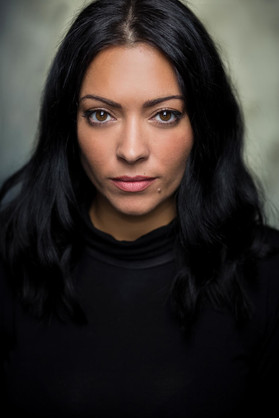Killing The Arts: How Choreographers Are Surviving The Lockdown
- Gennaro Costanzo

- Apr 22, 2021
- 4 min read
It’s been almost a year since the last time we’ve seen a live performance from the velvet seats of a dance hall. Whether it was ballet, salsa or contemporary, dance shows were a way to escape from the monotony of life - even before the pandemic.
Dance and performing arts have helped economic growth and boosted employment in the UK since 2015, with an estimated 131,200 performers hired and a contribution of £24.5 billion to the country’s economy - according to the Arts Council.
In London, dance schools were opened during the summer break in 2020, but have since closed their doors under government guidance, at least until the 5th of April. While some funding for professionals has appeared, most agree that they haven’t been truly represented or supported.
Leena Patel, 34, artistic director at LPL Productions and founder of ‘Bollyfemme’ based in London, said her Bollywood dance school went from being one of the most booked ones in the country to a business unable to operate.

‘Dance is something that keeps me alive and once that was lost, it was just so hard to market the classes. People were not interested, they were sick and tired of doing online sessions,’ she says.
For more established choreographers like Nadia Sohawon, 37, who has more than 22 years of experience in the field, her reputation and experience in the industry helped her to be in a luckier working position.
‘For me, work was actually dotted around during lockdown, so I was asked to do a lot of online teaching and then towards the end of last year I travelled to Malta to film a feature film which I didn’t think was possible during a lockdown,’ says Nadia the founder of ‘freeYOURstyle’ (FYS-CO) based in the British capital.
FYS-CO started off as a small collective of dancers, becoming with time one of the only agency to represent only street dancers. But, like many others, the agency had to close temporarily, and most of its dancers were left without a job.
According to the Arts Council, the British government invested £1.45 billion of public money to support the Arts and Entertainment industry. Dancers and artists could apply for the self-employed grants but not all of them have been eligible. For Nadia, it was a failed attempt that could’ve killed the sector - along with the weird regulations.
‘You’re allowed to travel on a plane with however many people with a mask on for six hours, but you’re not allowed to go to the theatre, which is a bigger space, more ventilated and safer, to watch a show for two hours, ‘ says Nadia.
For a freelancer like Leena, the approach of the government felt quite rushed and didn’t make it easy for her and her peers. ‘The lack of awareness was not helpful whatsoever. There was no financial support and most of the things they introduced were against the industry and against what we do.’

International performers feel the same, Naomi James, 34, is an independent choreographer and dancer who dreams of opening her own professional studio in Atlanta, where she currently works.
Last year, Naomi founded her own dance company ‘Naomi James LLC’ to teach professionally, but the quarantine and the economic impact of COVID didn’t make it easy for her.
‘I had so many breakdowns and I had just started. I wanted to give up and thought that I don’t have the studio space, the clientele that I know I could have because I have to be cautious,’ she says.
When quarantine started in the US, Naomi’s colleagues were left unpaid and financially unstable. ‘Because all of this stuff is going out of our control, we now suffer,’ she says. ‘There needs to be something to cover loss in the creative industry because the government is not going to do that for us.’
As rehearsals and performances weren’t allowed to take place in a studio, most activities moved online. This unexpected change deeply affected teaching in the dance industry, with immersive shows and virtual classes becoming the new normal.
‘People weren’t with me, I wasn’t feeling the energy because I was just on a screen,’ says Leena who wished to unify people with her lessons. 'I feel as this translated to the students because it started off with loads of people booking and, as the novelty wore off, people started to drop off.’
Similarly, Naomi continued her weekly dance and fitness classes online. But while it did extend her network connections, the virtual experience affected the social aspect, denying that energy between her and her students - especially the younger ones.
‘If you’re growing as a dancer, you’re not going to look at a camera and learn. You gotta learn in person, you have to understand stage presence and how to expand your movements, and you can’t do these things online,’ she says.
But for Nadia, the online experience represents the only solution to keep dance alive. ’I think the internet has been our saviour. As much as it is so sad that we’re not performing in theatres, at least we’ve worked out ways that we can do things without it.'


















Comments